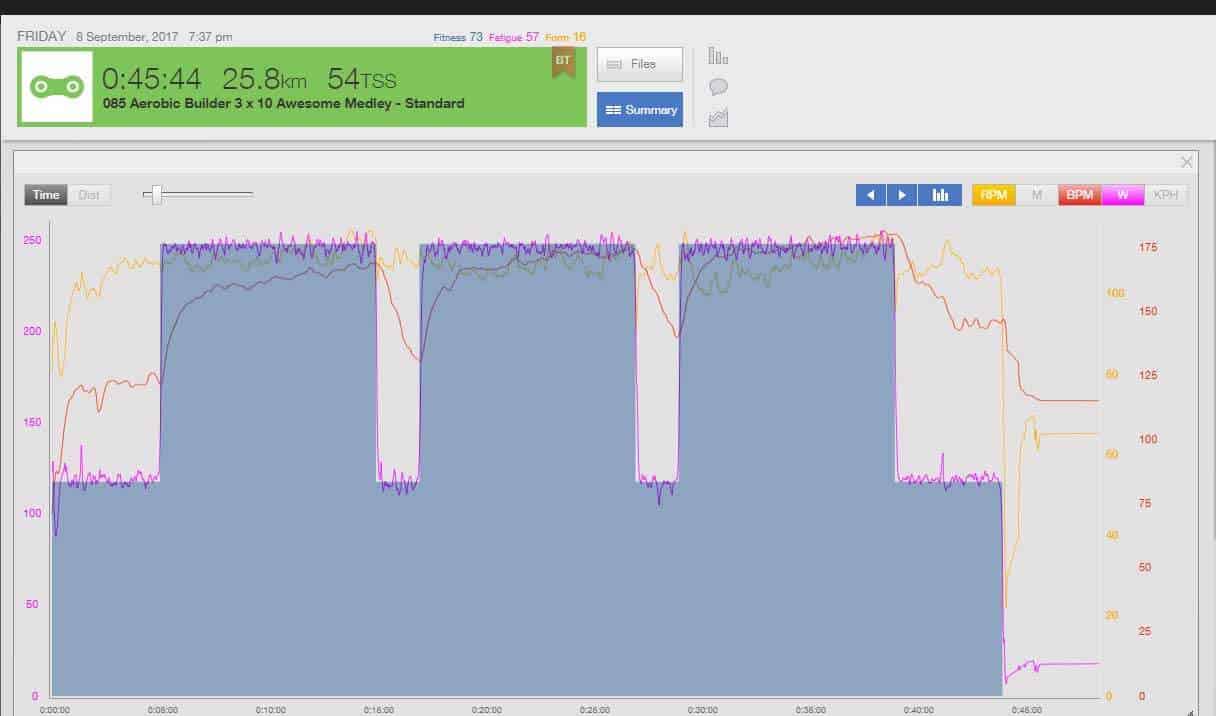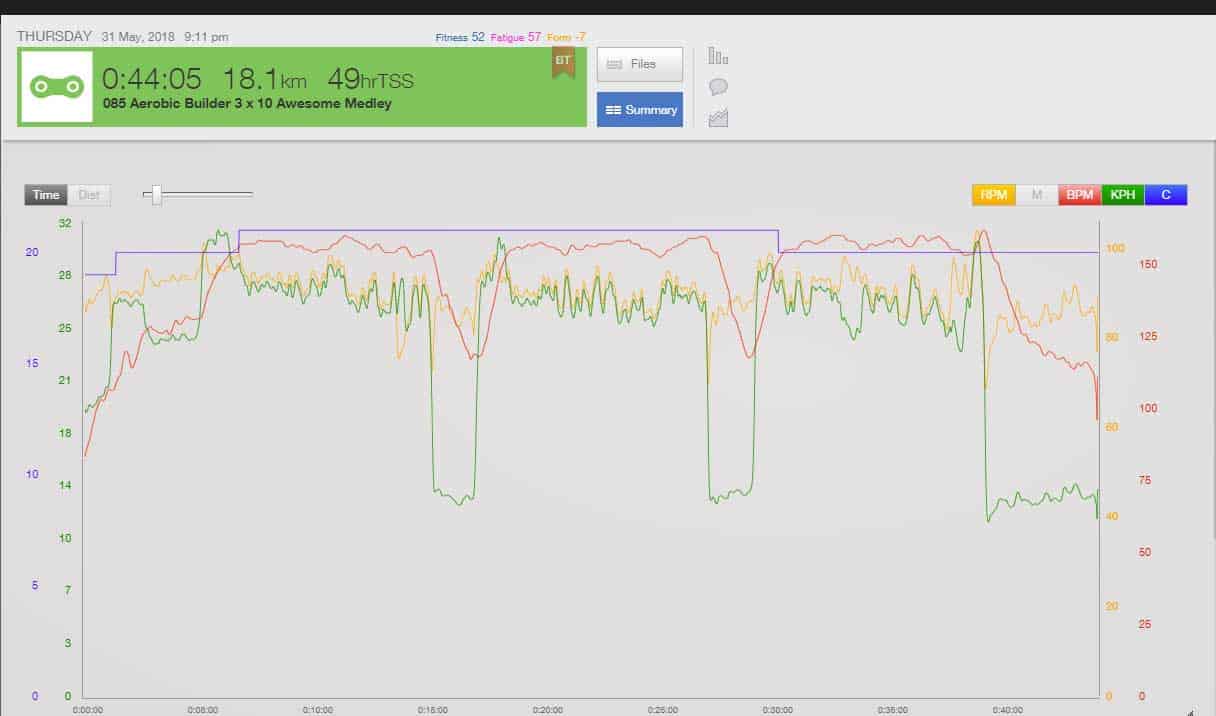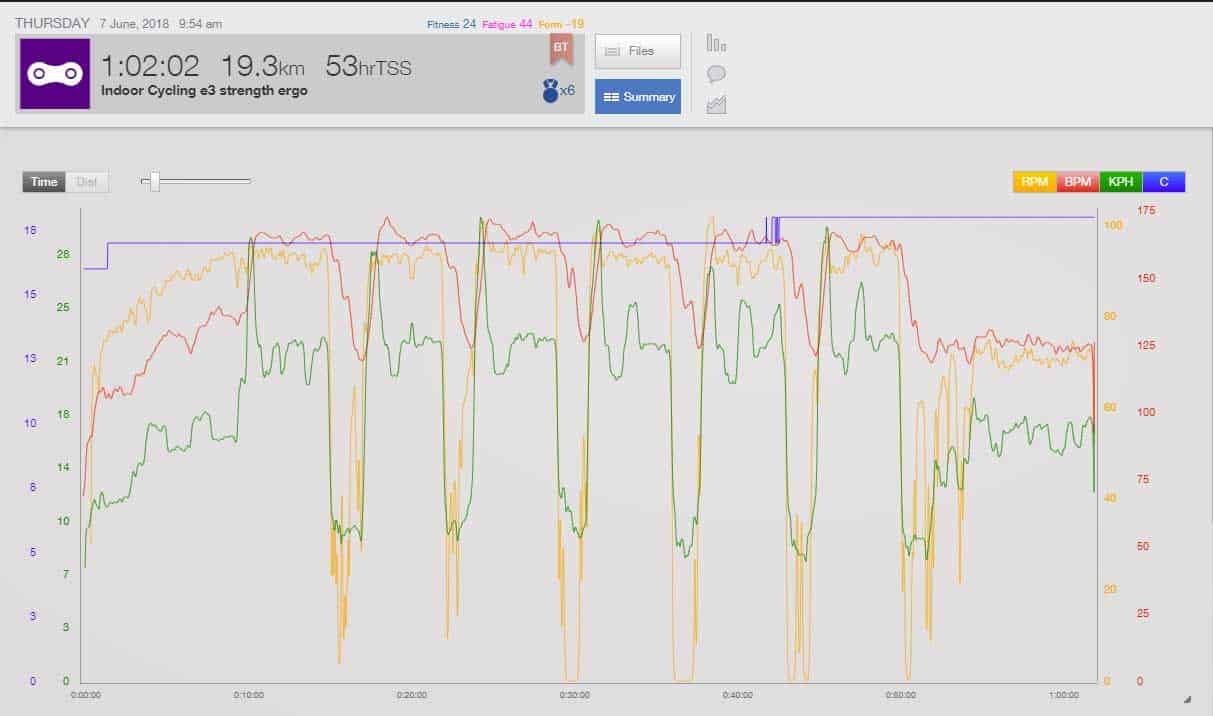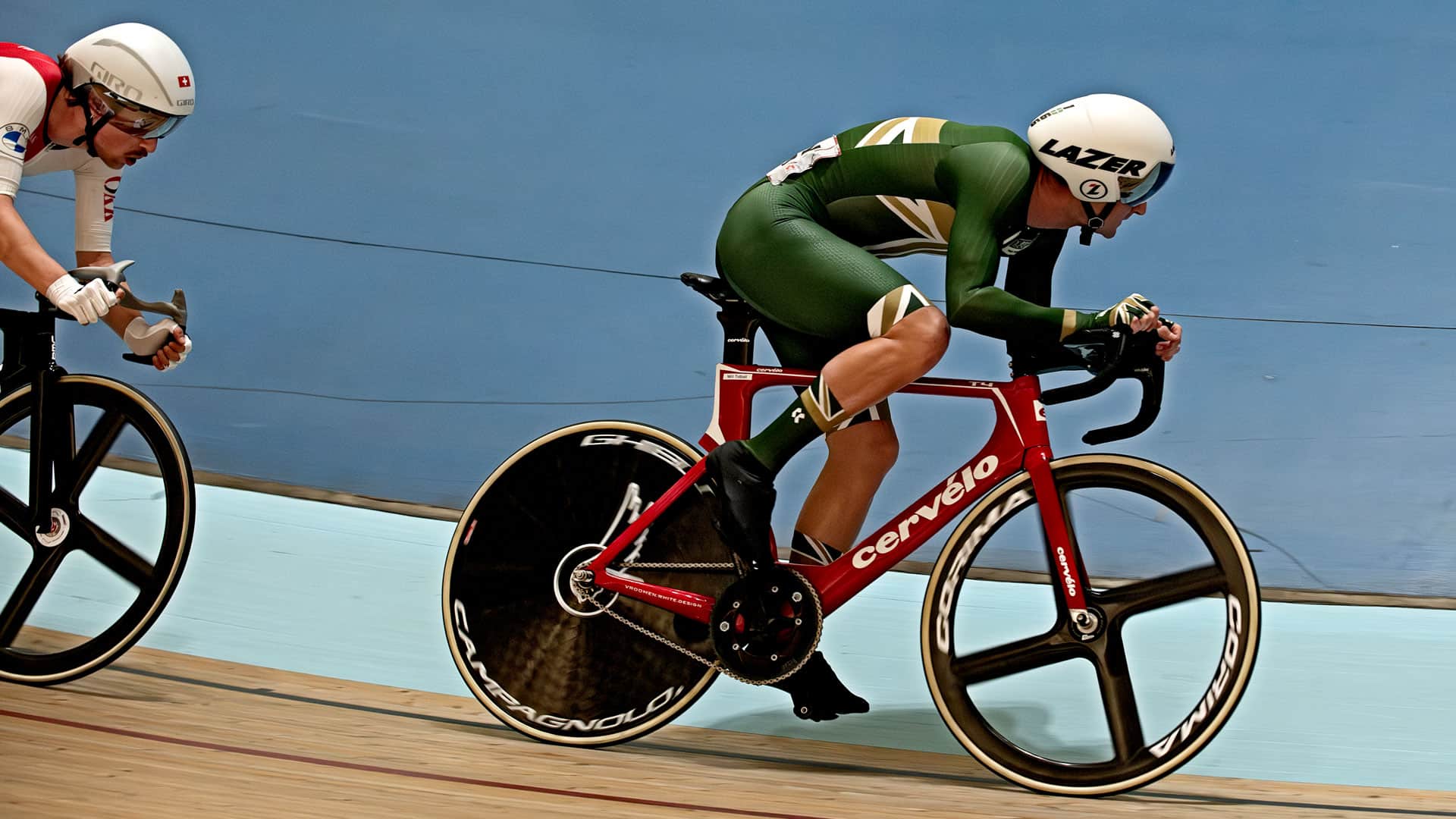In this article, I discuss the difference between training to Heart Rate and Power as well as how cardiac drift plays a significant role in skewing heart rates zones data in cycling indoor interval sessions.
The following images are from athletes data, the first two show our 085 – Aerobic Builder 3 x 10 Awesome Medley indoor training session using power on a smart trainer and with heart rate. The third image is 002 – Aerobic Strength Endurance indoor training session executed with heart rate.

Image 1 – 085 Aerobic Builder 3 x 10 Awesome Medley indoor training session done with power

Image 2 – 085 – Aerobic Builder 3 x 10 Awesome Medley indoor training session with heart rate. Notice the green line peaks at the beginning of the each of the intervals then slowly drops as the athlete tried to get their heart rate into the correct zones

Image 3 – 002 Aerobic Strength Endurance indoor training session done with heart rate. Its event more evident in this session than the session in image 2 as the athlete is overcompensating and having to drop off their speed through the session to keep their heart rate at the top end of the heart rate zone.
Images 1 & 2 – the session starts with a build into E3. This is followed by 3 x 10 minute E3 efforts. Each effort is broken up with 2-minute recovery.
In image 1 where the athlete was recording power, the blue area is the power that the trainer is delivering. The purple line it the athlete’s actual power and the red line is their heart rate.
In images 2 & 3 where the athlete was riding on Heart Rate the speed (which is equivalent to power) is the green line and the red line is their heart rate.
You’ll notice that the athlete’s power (purple) line on image 1 is relatively stable throughout all the efforts because they are using a Wahoo Kickr which is managing the delivery of power to their session by way of the training workout file that comes will all our indoor training seasons. Whereas, the heart rate line (red) slowly climbs throughout this cycling indoor training session. This heart rate drift upwards (red line) is called cardiac drift and is shown on this chart in image 1.
With the heart rate sessions, the athlete in an effort to get their heart rate up has really pushed the trainer for the first few minutes to get their heart rate into the zone as quickly as possible, then as they progress through the interval their speed drops. This equates to over thresholding on power for the first few minutes of the effort then slowly recusing power for the remaining time of the effort. In doing so they are effectively riding on their cardiac drift. Let me explain.
Let us take a little more detailed look at this.
All the 10 minute efforts have been set for this athlete at 248 watts, which places them at the higher end of their E3 zone.
Due to a shortness of the recovery duration (two minutes) fatigue starts setting in. This influences the data that results in a cardiac drift while the athlete is maintaining a constant power output.
The first 10 min effort has an average heart rate of 159. The second effort the average heart rate increases to 167 and the last effort has the athlete’s average heart rate up to 173 clearly demonstrating the effects of cardiac drift.
There are many factors that affect heart rate during exercise, but these same influencing factors have a very little effect on the cyclist power output. Power is definitive whereas heart rate is not.
If the cyclist were asked to ride in E3 based on their heart rate alone the work effort for these efforts would slowly drop off as they progressed throughout this cycling interval session. They would be none the wiser as their heart rate would stay the same while their power gradually dropped off.
Many factors affect heart rate during exercise. These factors are (to name a few); general fatigue, ambient temp, the amount of sleep the athlete has had over the last few days and how hydrated they are.
While there are differences between training with power and heart rate, and that training with power is a more exact way of measuring training load, don’t discount training with heart rate. Heart rate training is still a very effective method of training. With our unique cycling training methodology we use both heart rate and/or power to train you, so you have a choice.
Also, it’s important to understand that just having a power meter does’t mean you are training any better than using a heart rate monitor. The quality of training you do and the results you get comes from the structure of the training you are doing, not in the device that you are using to measure your training load.
With the introduction of smart trainers like the Wahoo Kickr and the TacX Neo cyclists are able to get access to power training using structured workouts that help them improve their cycling performance.
Our 085 – Aerobic Builder 3 x 10 Awesome Medley cycling indoor session is designed to build extended hill climbing strength at low cadences as well as aerobic capacity and core strength while maintaining good form. It available as an integrated workout as part of the training programs which is available our online training centre or purchased individually from our from our online store. It comes with an instructional training video and workout files that are compatible with your home trainer, TrainerRoad, Zwift and Garmin cycle computers.
Check this article on How To Work Out Your Cycling Heart Rate Zones.






Leave A Comment